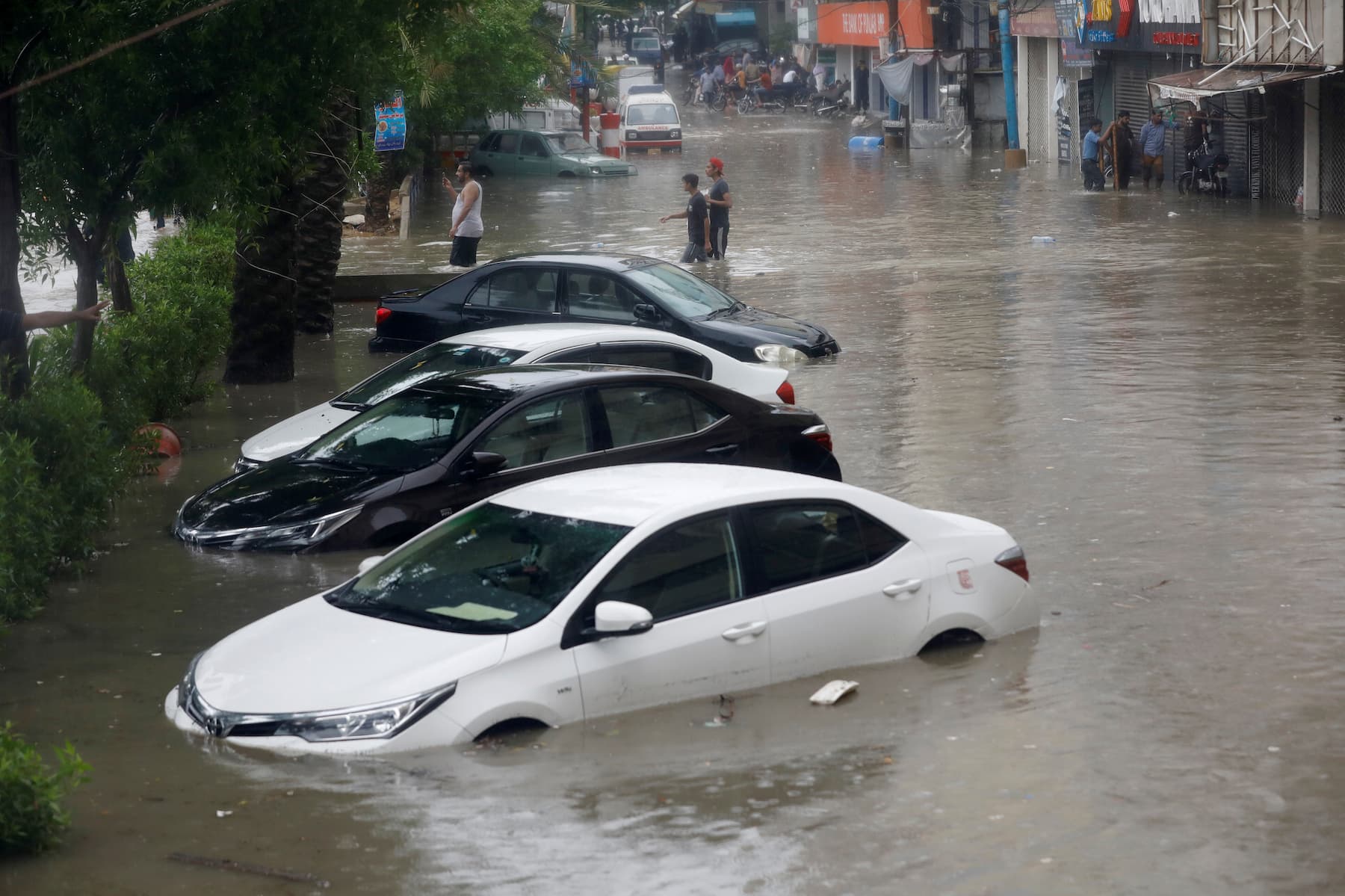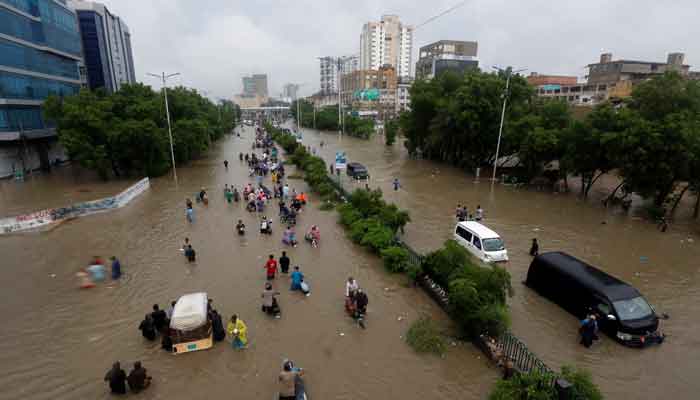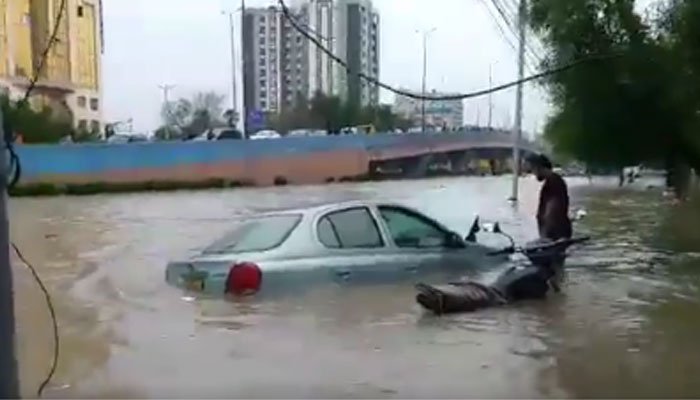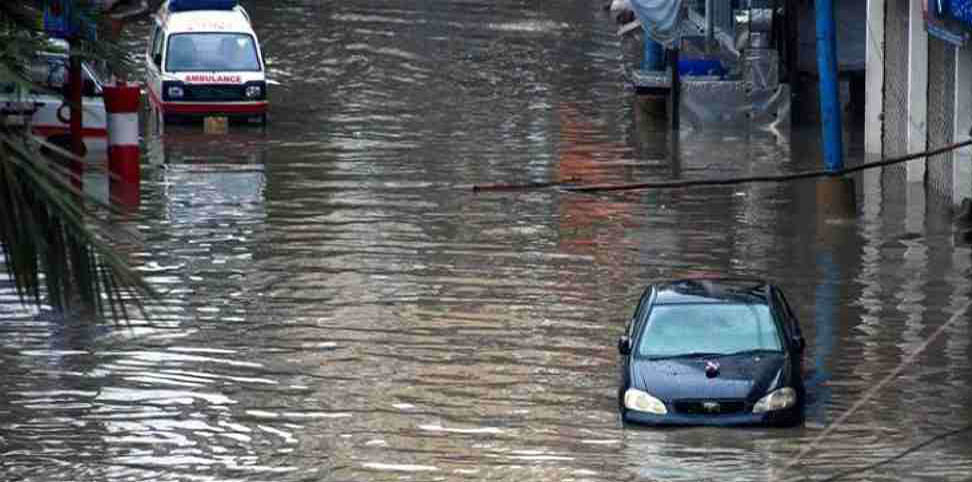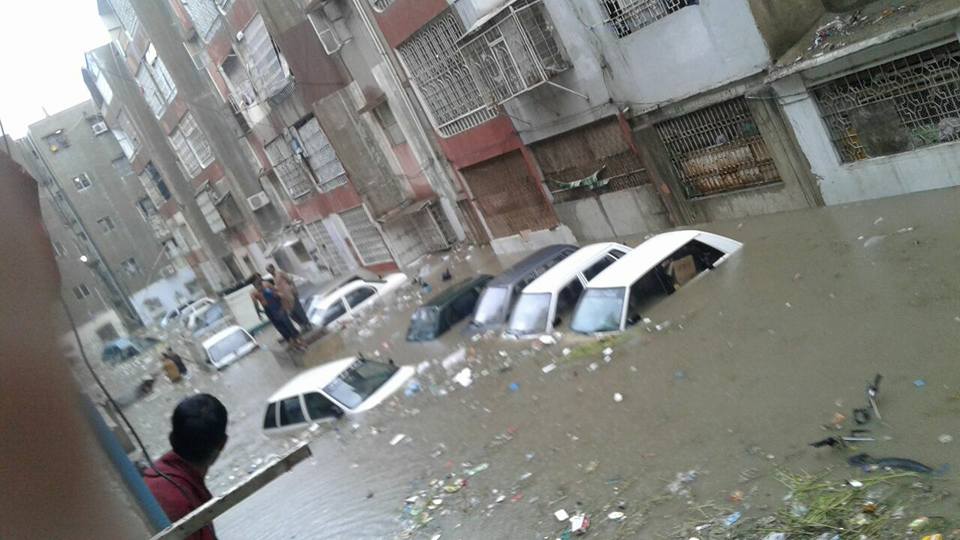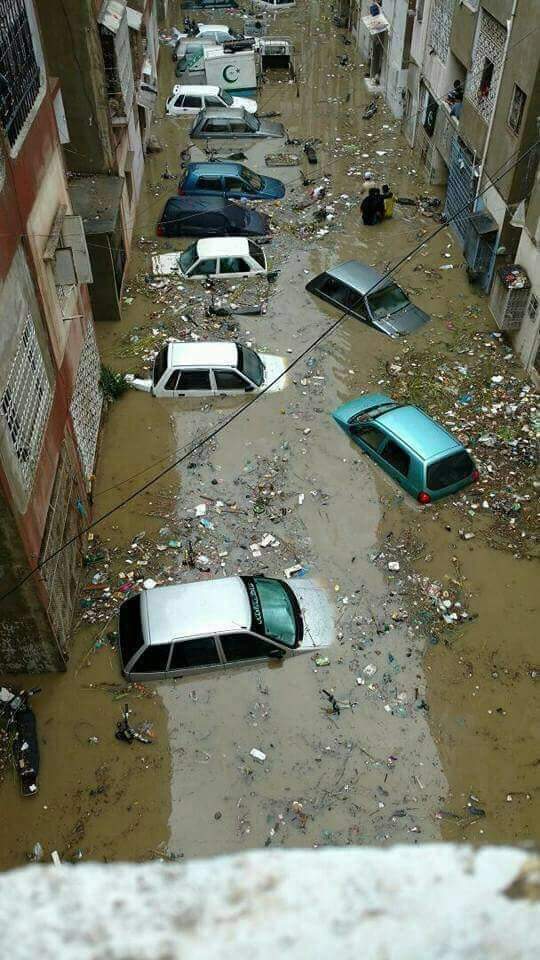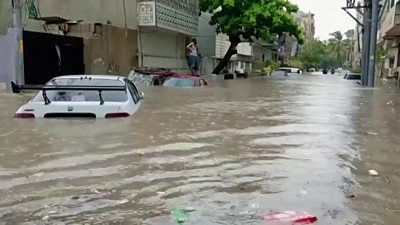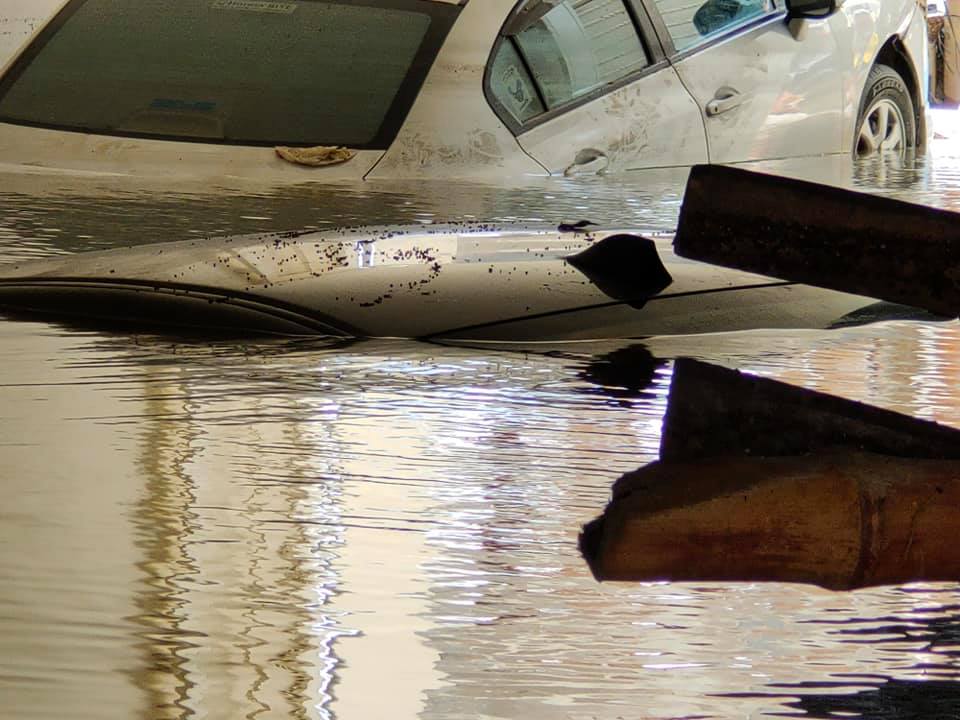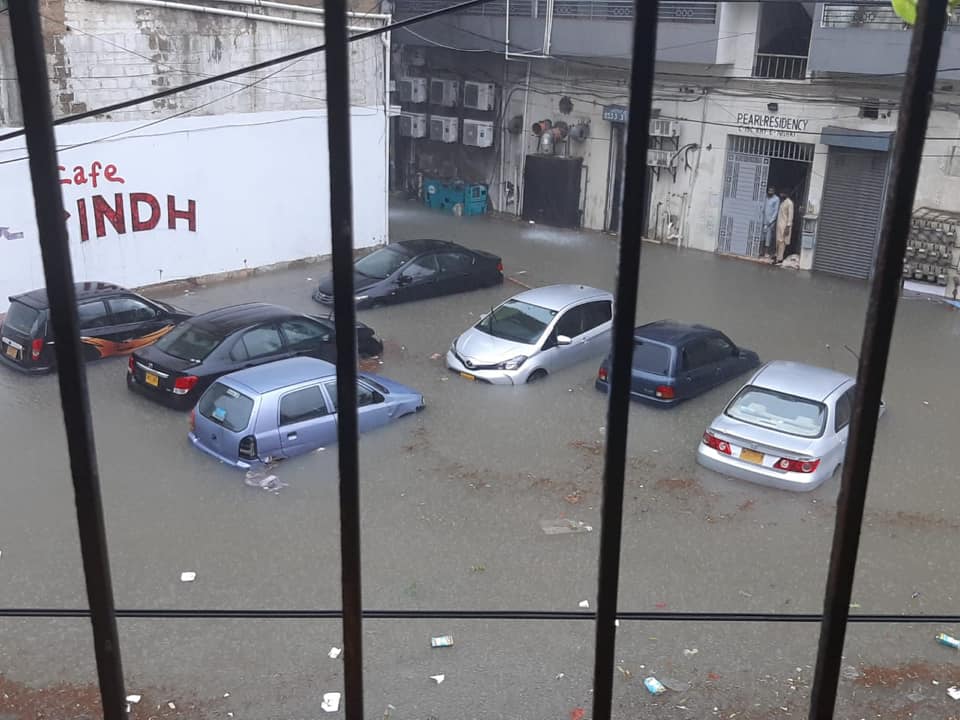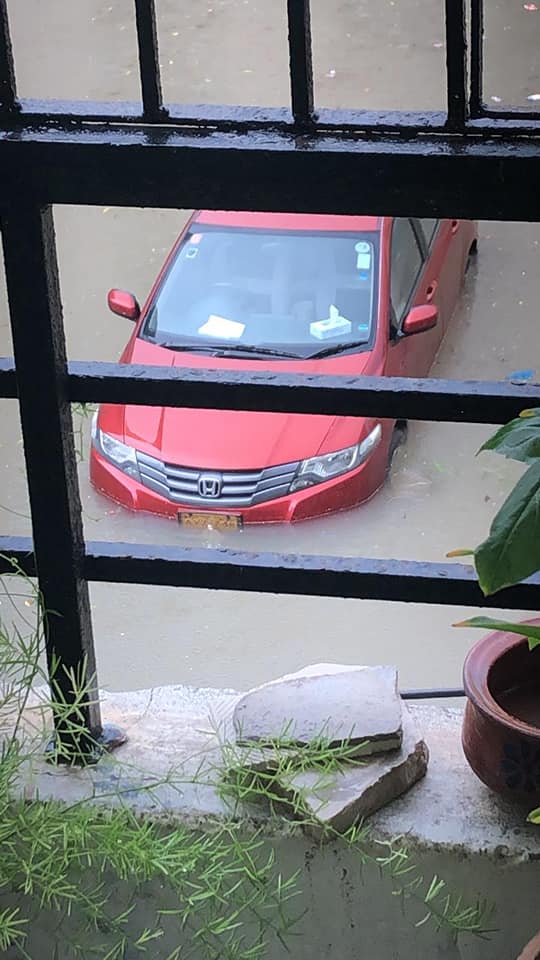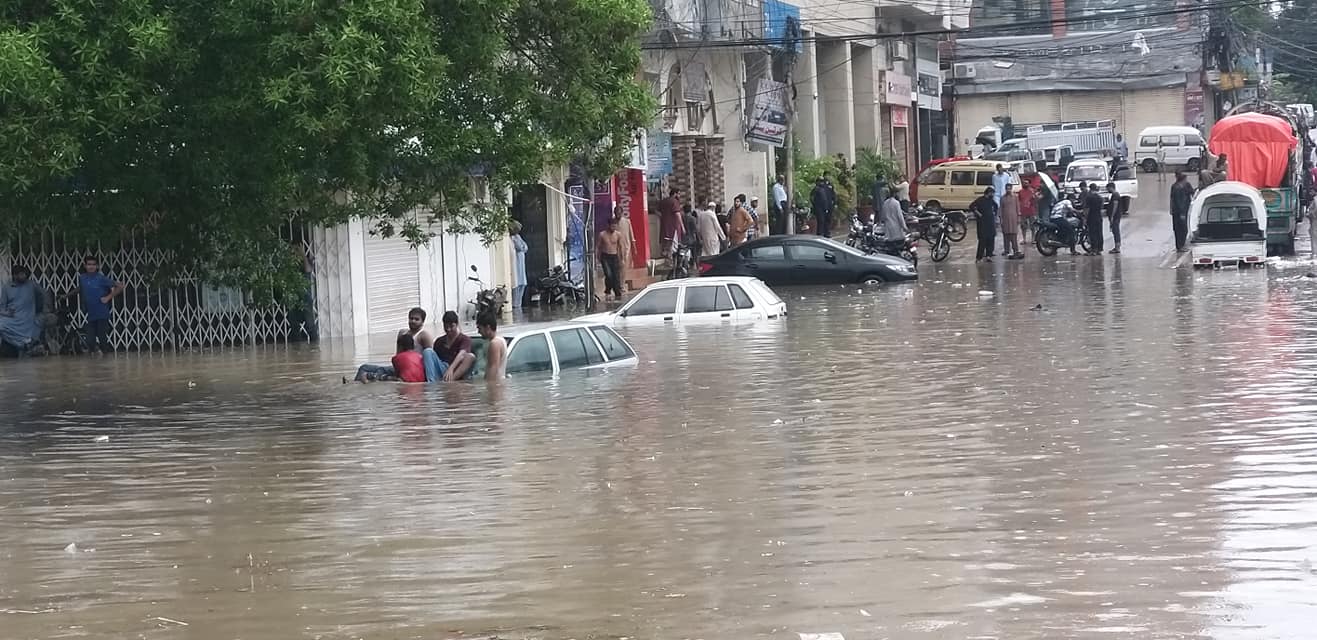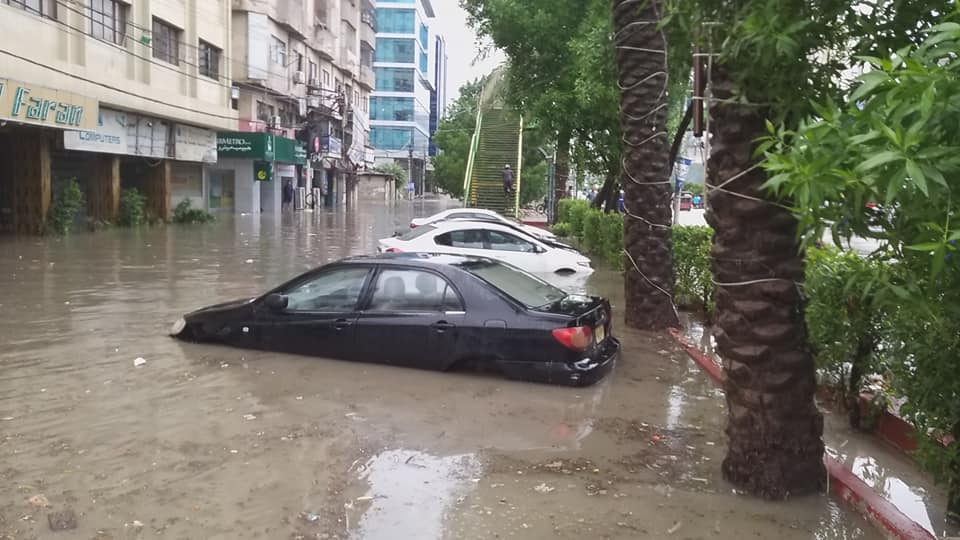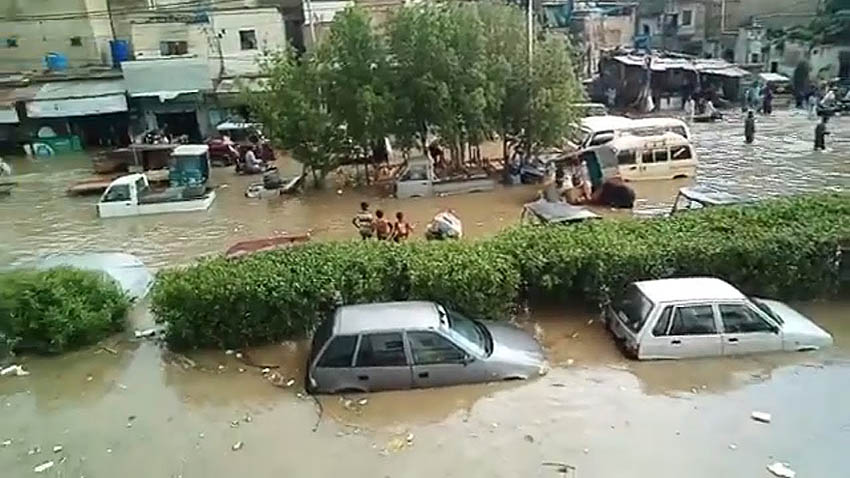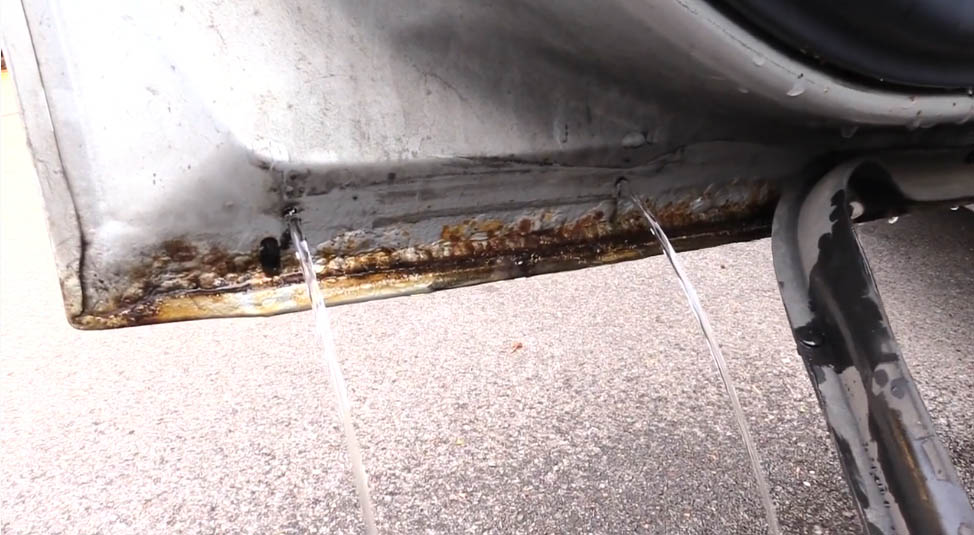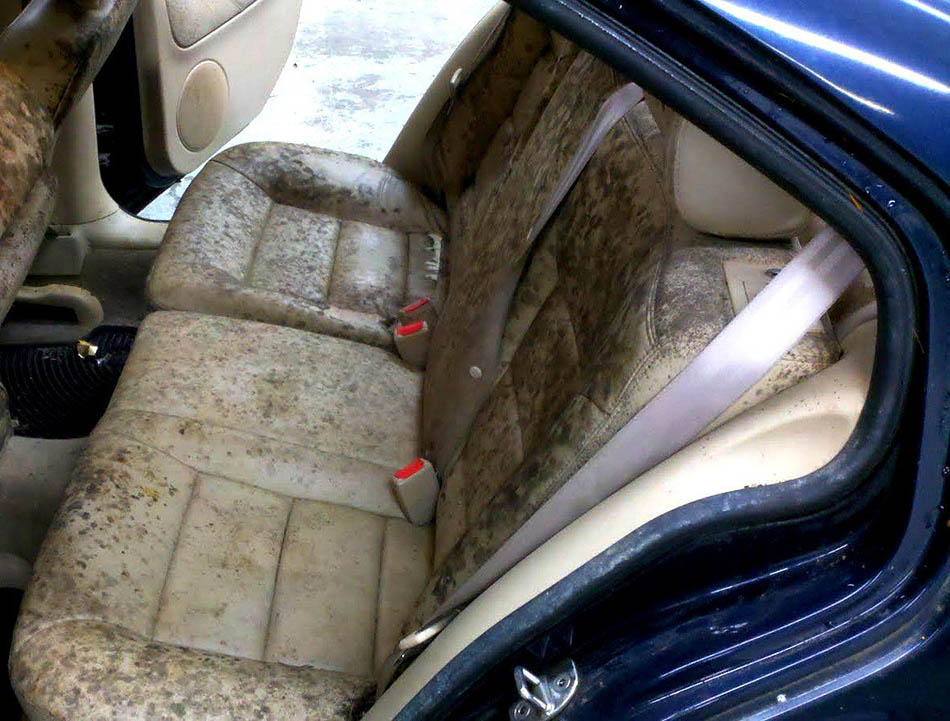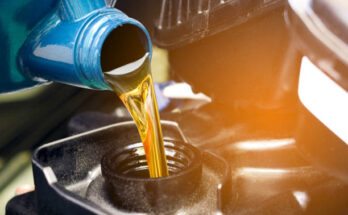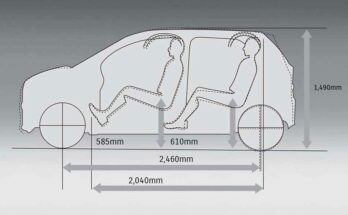Karachi is experiencing its most testing period ever with massive rainfalls coupled with worsening infrastructure and lack of preparations despite prior warnings of urban flooding that have created a devastating situation in country’s economic capital.
Related: Multiple Vehicles Damaged due to Landslide in Karachi
Even in posh localities water has entered into the houses damaging the furniture & appliances whereas thousands of vehicles have suffered due to the accumulation of rain water on streets well as major main roads. And while it was obvious for those who were traveling in the situation when rain started or got stuck in the traffic before water entered their vehicles, even those which were safely parked were not lucky enough to evade the disaster.
Just some glimpses of the catastrophic condition of Karachi after the recent spell of rains
There is obviously not much we can do but to wait for the situation to settle since the meteorological department as issued another warning of upcoming heavy monsoon spell which is expected to hit towards the end of August & early September, however there is a lot we should know about how to take care of our vehicles once the spell is over. Below will help you understand in what ways the rain water can damage your vehicle inside & out so it’s better to get these things fixed once the rainy season is ended.
The Engine
If your car was fully submerged in water, never try to start the engine since water might have seeped into more areas you can even imagine. Water can damage every single component inside a car including the engine and transmission. If you try to turn the engine on, the problem can only get worse. When water damages the engine and the pistons don’t compress or move like they normally should, it is called “hydrolock” and it is extremely common in flooded cars. If your car is hydrolocked, you can expect the cost of repairs to be extremely high and in severe cases; the car could completely be destroyed.
Related: Tips: Driving Through Rain-Flood Water
It’s better to get the vehicle towed to a workshop to get the dirty water removed from various areas including engine block, radiator, hoses & filters etc. Alto the wiring most likely needs to be redone depending on the severity of the damage.
However if your vehicle was partly waterlogged, you still need to examine the underside of the engine bay where the water had reached. Look out of grime, loam & unwanted items such as plastic bags etc if stuck in between belts etc. Muddy water can clog radiator so it’s better to get the vehicle serviced as soon as possible. Watch out for sensors & get them scanned to see if everything is working properly.
Cleaning the Fuel Tank
In worst case scenario the fuel tank will have to get cleaned too if water has made its way there. You will need to check if water has entered the oil tank by using a dipstick. If there are water droplets in the oil, you should not start the car as this could damage the cylinders inside the engine. The best thing you can do is to have a mechanic examine the problem. In most cases, the fuel tank is emptied out and then the water is removed.
The Underbody
This is the area which is not exposed to human eye but receives a lot of damage in shape of dirt & grime and grubby water. Get the underbody washed and have it coated to prevent corrosion. There are different types of coatings applied to the underbody however there are mixed opinions regarding their effectiveness as well as side effects so do consider before making up your mind, however having the underbody thoroughly cleaned is vital.
Rubber Components & Seals
Dirty rain water & particularly that flowing along with pressure also damage the rubber components of your vehicle. These include the door & window rubbers, underbody seals, exhaust/ silencer rubbers and bumpers etc. Worn out rubber & seals will affect the noise cancelation inside the cabin as well as allow water to enter the vehicle more frequently in future. And not just rain water, but you might find it hard to avoid water entering the interior during regular wash & servicing of your vehicle.
Inside of Door Panels
The inside of doors is mostly neglected as they can accumulate of lot of water in them and can generate rust if the water is not drained out from there. Remove the panels and get the water bleed out. The door panel covers the internal parts of a car door, such as the power windows & central locking wirings etc which can also malfunction due to moisture.
The Exhaust
Large amount of water entering from the silencer is also not good for the exhaust system. In normal circumstances when the engine is running, since the exhaust gases are flowing outwards through the tail pipe, water won’t be able to enter into it, even if it gets inside the exhaust pipe it won’t reach the engine since it’s mounted far too high for the water to reach.
But in a parked car with flood water flowing in the direction of exhaust pipe can bring the water inside but it’s highly unlikely to reach the engine by itself. You should be concerned about the water damaging the system by creating rust however in most cases the accumulated water will come out by revving the engine which pushes out water from the exhaust.
Suspension & Braking Components
The flood water can take its toll on the suspension and braking components too. The axle shafts, steering system, brake rotors, brake shoes, disc & drums and tensioner assemblies will start taking on rust, affecting the bearings etc, and if you don’t get them cleaned out fast, you may have to replace them at a very high cost.
The Interior
Once the water enters the cabin it creates a complete mess. The first thing to take the beating is your floor carpeting. But if the water level rises, the seat cushions can also get damaged. If you find puddles of water in your car, you will have to get rid of them as soon as possible. If you have a vacuum cleaner, you can remove the puddles quickly or you can use towels to soak up the water and remove it from the cabin. If you are using a vacuum cleaner, be careful as you could get electrocuted in the process.
Ventilate the Car
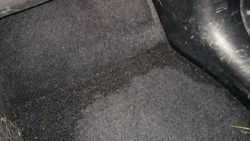 Once you have successfully removed the water build-up from the cabin and other places in the car, you will have to work just as fast to dry the affected areas. If there is enough sunlight near where your car is parked, simply roll down the windows, open all the doors, and let the heat from the sun work its magic. If there is not sufficient sunlight, you can park your car in an open space and use a standing fan to dry out the damp areas. A fan will also help remove any foul odors and keep mould and mildew away. If your car was not severely flooded but the cabin remained wet, you can use the heaters in your car to dry the interiors quickly – just make sure that the engine was not damaged.
Once you have successfully removed the water build-up from the cabin and other places in the car, you will have to work just as fast to dry the affected areas. If there is enough sunlight near where your car is parked, simply roll down the windows, open all the doors, and let the heat from the sun work its magic. If there is not sufficient sunlight, you can park your car in an open space and use a standing fan to dry out the damp areas. A fan will also help remove any foul odors and keep mould and mildew away. If your car was not severely flooded but the cabin remained wet, you can use the heaters in your car to dry the interiors quickly – just make sure that the engine was not damaged.
Remember…
The longer you let water sit in your car, the more damage it can cause. The wiring and mechanical components are the first things that can get damaged so you will have to work fast.
Be Careful When Trading
When the rainy season is over, be careful when trading your car. Many people tend to dispose off their cars instead of investing in heavy repairs, and perhaps you also might be looking to trade off your car in search of a better (used) one from the market.
Related: Guide: Buying a Used Car in Pakistan
In any case, don’t forget to examine the vehicle thoroughly and be prepared to spend on the necessary repairs & maintenance of the vehicle whether it’s your existing one or the replacement vehicle you are purchasing from used car market.

A computer animation professional with over 23 years of industry experience having served in leading organizations, TV channels & production facilities in Pakistan. An avid car enthusiast and petrolhead with an affection to deliver quality content to help shape opinions. Formerly written for PakWheels as well as major publications including Dawn. Founder of CarSpiritPK.com


